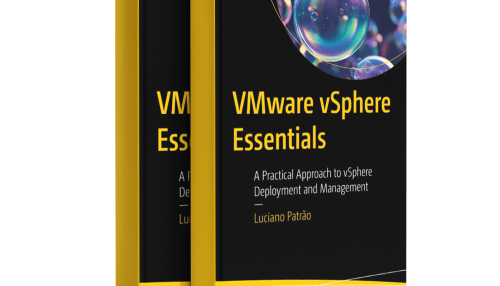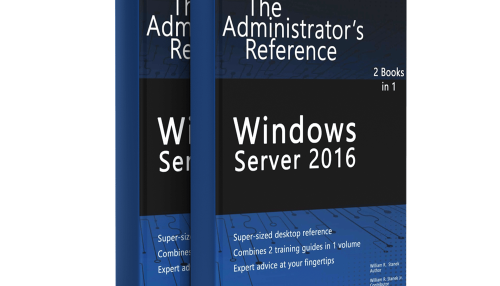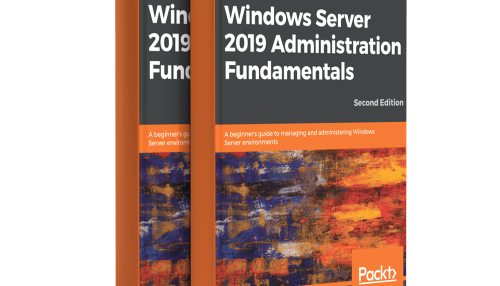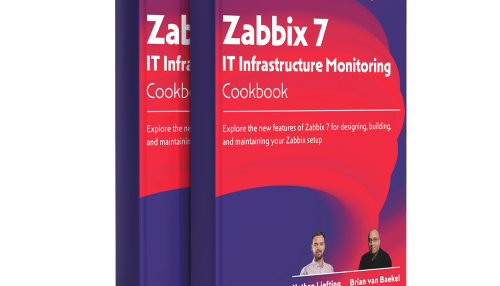VMware NSX Install, Configure, Manage [V4.0] Lab Manual
فهرست مطالب کتاب VMware NSX Install, Configure, Manage [V4.0] Lab Manual:
Lab 1 – Reviewing the Lab Environment and Topologies
Lab 2 – Reviewing the Configuration of the Predeployed NSX Manager Instance
Lab 3 – (Simulation) Deploying a Three‑Node NSX Management Cluster
Lab 4 – Preparing the NSX Infrastructure
Lab 5 – Configuring Segments
Lab 6 – Deploying and Configuring NSX Edge Nodes
Lab 7 – Configuring the Tier‑1 Gateway
Lab 8 – Creating and Configuring a Tier‑0 Gateway with OSPF
Lab 9 – Configuring the Tier‑0 Gateway with BGP
Lab 10 – Configuring VRF Lite
Lab 11 – Configuring the NSX Distributed Firewall
Lab 12 – Configuring the NSX Gateway Firewall
Lab 13 – Configuring Distributed Intrusion Detection
Lab 14 – (Simulation) Deploying NSX Application Platform
Lab 15 – (Simulation) Configuring Malware Prevention for East‑West Traffic
Lab 16 – (Simulation) Using NSX Network Detection and Response to Detect Threats
Lab 17 – Configuring Network Address Translation
Lab 18 – Configuring NSX Advanced Load Balancer
Lab 19 – Deploying Virtual Private Networks
Lab 20 – Managing Users and Roles
VMware NSX Install, Configure, Manage [V4.0] Lecture Manual
فهرست مطالب کتاب VMware NSX Install, Configure, Manage [V4.0] Lecture Manual:
Module 1 – Course Introduction
Module 2 – VMware Virtual Cloud Network and VMware NSX
Module 3 – Preparing the NSX Infrastructure
Module 4 – NSX Logical Switching
Module 5 – NSX Logical Routing
Module 6 – NSX Logical Bridging
Module 7 – NSX Firewalls
Module 8 – NSX Advanced Threat Prevention
VMware SD-WAN Administration Guide (VMware SD-WAN 5.1)
فهرست مطالب VMware SD-WAN Administration Guide (VMware SD-WAN 5.1):
1 About VMware SD-WAN Administration Guide
2 What’s New
3 Overview
4 User Agreement
5 Log in to VMware Cloud Orchestrator Using SSO for Enterprise User
6 Monitor Enterprises
7 Monitor Enterprise using New Orchestrator UI
8 Configure Segments
9 Configure Segments with New Orchestrator UI
10 Configure Network Services
11 Configure Network Services with New Orchestrator UI
12 Configure Profiles
13 Configure Profiles with New Orchestrator UI
14 Configure a Profile Device
15 Configure Business Policy
16 Configure Business Policies with New Orchestrator UI
17 Firewall Overview
18 Provision an Edge
19 Access SD-WAN Edges Using Key-Based Authentication
20 Configure User Account details
21 View or Modify Edge Information
22 View Edge Information with New Orchestrator UI
23 Edge Device Configurations
24 Edge Software Image Management
25 SD-WAN Gateway Migration
26 Object Groups
27 Site Configurations
28 IPv6 Settings
29 Configure Dynamic Routing with OSPF or BGP
30 Configure Alerts
31 Configure Alerts and Notifications with New Orchestrator UI
32 Testing and Troubleshooting
33 Enterprise Administration
34 Edge Management with New Orchestrator UI
35 User Management – Enterprise
36 Configure High Availability on SD-WAN Edge
37 VMware Virtual Edge Deployment
38 Appendix
VMware VSphere Essentials A Practical Approach to VSphere Deployment and Management
فهرست مطالب کتاب VMware vSphere Essentials A Practical Approach to vSphere Deployment and Management:
Chapter 1: Understanding Virtualization
Chapter 2: VMware and vSphere Overview
Chapter 3: System Requirements and Licensing
Chapter 4: Deploying a vSphere Environment
Chapter 5: vSphere Networking
Chapter 6: vSphere Datastores
Chapter 7: Virtual Machines
Chapter 8: VMware vCenter
Chapter 9: vCenter Server Appliance Management Interface (VAMI)
Chapter 10: Datacenters and Clusters
Chapter 11: vCenter Datastores
Chapter 12: Managing Datastores
Chapter 13: vSphere Storage Policies and Encryption
Chapter 14: vSphere Distributed Switch
Chapter 15: Advanced Configuration with vSphere Distributed Switch
Chapter 16: Configuring LACP in vSphere Distributed Switch
Chapter 17: vSphere Advanced Features
Chapter 18: vSphere Cluster Services (vCLS)
Chapter 19: vSphere High Availability (HA)
Chapter 20: vSphere Proactive HA
Chapter 21: vSphere Fault Tolerance
Chapter 22: Virtual Machine Snapshots
Chapter 23: Enhanced vMotion Compatibility (EVC) Mode
Chapter 24: Host Profiles in vSphere
Chapter 25: VMware Hot Add and Hot Plug
Chapter 26: Direct Path I/O Passthrough
Chapter 27: Add a USB Device to vSphere
Chapter 28: How to Reset the vCenter Root Password
Chapter 29: vCenter Update/Upgrade
Chapter 30: vSphere Lifecycle Manager
Chapter 31: vSphere Backup and Disaster Recovery
Chapter 32: Other VMware Products
Chapter 33: VMware Certification Overview
Chapter 34: Embracing the Future of Virtualization with VMware vSphere
Windows Networking Troubleshooting
فهرست مطالب:
About the Authors
About the Technical Reviewer
Windows Troubleshooting Series
Chapter 1: Understanding Networks 1 Chapter 2: Managing Network Connections
Chapter 3: TCP/IP Networking
Chapter 4: What Causes Networking Problems
Chapter 5: Troubleshooting Networking 83 Chapter 6: Networking in a Virtual World
Chapter 7: Troubleshooting Mobile Worker and BYOD Networking Problems
Index
Windows Security Internals with PowerShell
فهرست مطالب کتاب Windows Security Internals with PowerShell:
Introduction
Chapter 1: Setting Up a PowerShell Testing Environment
PART I: An Overview of the Windows Operating System
Chapter 2: The Windows Kernel
Chapter 3: User-Mode Applications
PART II: The Windows Security Reference Monitor
Chapter 4: Security Access Tokens
Chapter 5: Security Descriptors
Chapter 6: Reading and Assigning Security Descriptors
Chapter 7: Access Checking
Chapter 8: Other Access Checking Use Cases
Chapter 9: Security Auditing
PART III: The Local Security Authority and Authentication
Chapter 10: Local Authentication
Chapter 11: Active Directory
Chapter 12: Interactive Authentication
Chapter 13: Network Authentication
Chapter 14: Kerberos Authentication
Chapter 15: Negotiate Authentication and Other Security Packages
Appendix A: Building a Windows Domain Network for Testing
Appendix B: SDDL SID Constants
Windows Server 2016 The Administrator’s Reference
فهرست مطالب کتاب Windows Server 2016 The Administrator’s Reference:
How to Use This Guide
Print Readers
Digital Book Readers
Support Information
Conventions & Features
Share & Stay in Touch
Chapter 1. Welcome to Windows Server 2016
Chapter 2. Working with Windows Servers
Chapter 3. Configuring Server Settings
Chapter 4. Understanding Active Directory Connecting Network Resources
Chapter 5. Managing Active Directory
Chapter 6. Maintaining Active Directory
Chapter 7. Accounts: The Essentials
Chapter 8. Managing Account Policies
Chapter 9. Creating Accounts
Chapter 10. Working with Managed Accounts
Chapter 11. Managing Computers, Users and Groups
Chapter 12. Maintaining Your Servers
Chapter 13. Optimizing Server Performance
Chapter 14. Using Group Policy
Chapter 15. Maintaining and Troubleshooting Group Policy
Chapter 16. Optimizing Server Security
Chapter 17. Deploying Windows Server 2016
Chapter 18. Implementing TCP/IP Networking
Chapter 19. Data Storage: The Essentials
Chapter 20. Partitioning and Optimizing Drives
Chapter 21. Using TPM and BitLocker Drive Encryption
Chapter 22. Using Storage Spaces
Chapter 23. Using RAID
Chapter 24. Maintaining Partitions and Drives
Chapter 25. Implementing File Sharing
Chapter 26. Using Shadow Copies and Work Folders
Chapter 27. Managing Permissions and Auditing
Chapter 28. Configuring Disk Quotas
Chapter 29. Using Group Policy for Administration
Chapter 30. Implementing Print Services
Chapter 31. Configuring and Maintaining Print Services
Chapter 32. Implementing DHCP
Chapter 33. Managing and Maintaining DHCP
Chapter 34. Implementing DNS
Chapter 35. Managing and Maintaining DNS
Index
Windows Server 2019 Administration Fundamentals, Second Edition A beginner’s guide to managing and administering Windows Server environments
فهرست مطالب کتاب Windows Server 2019 Administration Fundamentals:
Preface
Chapter 1: Getting started with Windows Server
Chapter 2: Introducing Windows Server 2019
Chapter 3: Installing Windows Server 2019
Chapter 4: Post-Installation Tasks in Windows Server 2019
Chapter 5: Directory Services in Windows Server 2019
Chapter 6: Adding Roles to Windows Server 2019
Chapter 7: Group Policy in Windows Server 2019
Chapter 8: Virtualization with Windows Server 2019
Chapter 9: Storing Data in Windows Server 2019
Chapter 10: Tuning and Maintaining Windows Server 2019
Chapter 11: Updating and Troubleshooting Windows Server 2019
Chapter 12: Preparing for the MTA 98-365 Exam
Index
Windows Server 2019 Inside Out
فهرست مطالب کتاب Windows Server 2019 Inside Out:
Chapter 1 Administration tools
Chapter 2 Installation options
Chapter 3 Deployment and configuration
Chapter 4 Active Directory
Chapter 5 DNS, DHCP, and IPAM
Chapter 6 Hyper-V
Chapter 7 Storage
Chapter 8 File servers
Chapter 9 Internet Information Services
Chapter 10 Containers
Chapter 11 Clustering and high availability
Chapter 12 Active Directory Certificate Services
Chapter 13 Active Directory Federation Services
Chapter 14 Dynamic Access Control and Active Directory Rights Management Services
Chapter 15 Routing and Remote Access
Chapter 16 Remote Desktop Services
Chapter 17 Azure IaaS and hybrid services
Chapter 18 Windows Subsystem for Linux
Chapter 19 Hardening Windows Server and Active Directory
Chapter 20 Security systems and services
Chapter 21 Maintenance and monitoring
Chapter 22 Upgrade and migration
Chapter 23 Troubleshooting
Index
Wireshark Network Analysis (Second Edition) The Official Wireshark Certified Network Analyst Study Guide
فهرست مطالب کتاب Wireshark Network Analysis (Second Edition):
Chapter 1: The World of Network Analysis
Chapter 2: Introduction to Wireshark
Chapter 3: Capture Traffic
Chapter 4: Create and Apply Capture Filters
Chapter 5: Define Global and Personal Preferences
Chapter 6: Colorize Traffic
Chapter 7: Define Time Values and Interpret Summaries
Chapter 8: Interpret Basic Trace File Statistics
Chapter 9: Create and Apply Display Filters
Chapter 10: Follow Streams and Reassemble Data
Chapter 11: Customize Wireshark Profiles
Chapter 12: Annotate, Save, Export and Print Packets
Chapter 13: Use Wireshark’s Expert System
Chapter 14: TCP/IP Analysis Overview
Chapter 15: Analyze Domain Name System (DNS) Traffic
Chapter 16: Analyze Address Resolution Protocol (ARP) Traffic
Chapter 17: Analyze Internet Protocol (IPv4/IPv6) Traffic
Chapter 18: Analyze Internet Control Message Protocol (ICMPv4/ICMPV6) Traffic
Chapter 19: Analyze User Datagram Protocol (UDP) Traffic
Chapter 20: Analyze Transmission Control Protocol (TCP) Traffic
Chapter 21: Graph IO Rates and TCP Trends
Chapter 22: Analyze Dynamic Host Configuration Protocol (DHCPv4/DHCPv6) Traffic
Chapter 23: Analyze Hypertext Transfer Protocol (HTTP) Traffic
Chapter 24: Analyze File Transfer Protocol (FTP) Traffic
Chapter 25: Analyze Email Traffic
Chapter 26: Introduction to 802.11 (WLAN) Analysis
Chapter 27: Introduction to Voice over IP (VoIP) Analysis
Chapter 28: Baseline “Normal” Traffic Patterns
Chapter 29: Find the Top Causes of Performance Problems
Chapter 30: Network Forensics Overview
Chapter 31: Detect Network Scanning and Discovery Processes
Chapter 32: Analyze Suspect Traffic
Chapter 33: Effective Use of Command Line Tools
Appendix A: Resources on the Book Website
All Access Pass Training Offer
Zabbix 7 IT Infrastructure Monitoring Cookbook Explore the New Features of Zabbix 7 for Designing, Building, and Maintaining Your Zabbix Setup
فهرست مطالب کتاب Zabbix 7 IT Infrastructure Monitoring Cookbook:
Chapter 1 Installing Zabbix and Getting Started Using the Frontend
Chapter 2 Getting Things Ready with Zabbix User Management
Chapter 3 Setting Up Zabbix Monitoring
Chapter 4 Working with Triggers and Alerts
Chapter 5 Building Your Own Structured Templates
Chapter 6 Visualizing Data, Inventory and Reporting
Chapter 7 Using Discovery for Automatic Creation
Chapter 8 Setting Up Zabbix Proxies
Chapter 9 Integrating Zabbix with External Services
Chapter 10 Extending Zabbix Functionality with Custom Scripts and Zabbix API
Chapter 11 Maintaining Your Zabbix Setup
Chapter 12 Advanced Zabbix Database Management
Chapter 13 Bringing Zabbix to the Cloud with Zabbix Cloud Integration
دفترچه یادداشت انگولار برای حرفهای ها | Angular 2+ Notes for Professionals
فهرست مطالب کتاب Angular 2+ Notes for Professionals:
Getting started with Angular 2+
Components
Component interactions
Directives
Page title
Templates
Commonly built-in directives and services
Directives & components : @Input @Output
Attribute directives to affect the value of properties on the host node by using the @HostBinding decorator.
How to Use ngif
How to use ngfor
Angular – ForLoop
Modules
Pipes
OrderBy Pipe
Angular 2 Custom Validations
Routing
Routing (3.0.0+)
Dynamically add components using ViewContainerRef.createComponent
Installing 3rd party plugins with angular-cli@1.0.0-beta.10
Lifecycle Hooks
Angular RXJS Subjects and Observables with API requests
Services and Dependency Injection
Service Worker
EventEmitter Service
Optimizing rendering using ChangeDetectionStrategy
Angular 2 Forms Update
Detecting resize events
Testing ngModel
Feature Modules
Bootstrap Empty module in angular 2
Lazy loading a module
Advanced Component Examples
Bypassing Sanitizing for trusted values
Angular 2 Data Driven Forms
Angular 2 In Memory Web API
Ahead-of-time (AOT) compilation with Angular 2
CRUD in Angular 2 with Restful API
Use native webcomponents in Angular 2
Update typings
Mocking @ngrx/Store
ngrx
Http Interceptor
Animation
js
Angular 2 Animations
Create an Angular 2+ NPM package
Angular 2 CanActivate
Angular 2 – Protractor
Example for routes such as /route/subroute for static urls
Angular 2 Input() output()
Angular-cli
Angular 2 Change detection and manual triggering
Angular 2 Databinding
Brute Force Upgrading
Angular 2 provide external data to App before bootstrap
custom ngx-bootstrap datepicker + input
Using third party libraries like jQuery in Angular 2
Configuring ASP.net Core application to work with Angular 2 and TypeScript
Angular 2 using webpack
Angular material design
Dropzone in Angular 2
angular redux
Creating an Angular npm library
Barrel
Testing an Angular 2 App
angular-cli test coverage
Debugging Angular 2 TypeScript application using Visual Studio Code
unit testing

![VMware NSX Install, Configure, Manage [V4.0] Lab Manual](https://amnafzar-rayka.ir/wp-content/uploads/2025/10/VMware-NSX-Install-Configure-Manage-V4.0-Lab-Manual-min-500x286.png)
![VMware NSX Install, Configure, Manage [V4.0] Lecture Manual](https://amnafzar-rayka.ir/wp-content/uploads/2025/10/VMware-NSX-Install-Configure-Manage-V4.0-Lecture-Manual-min-500x286.png)









